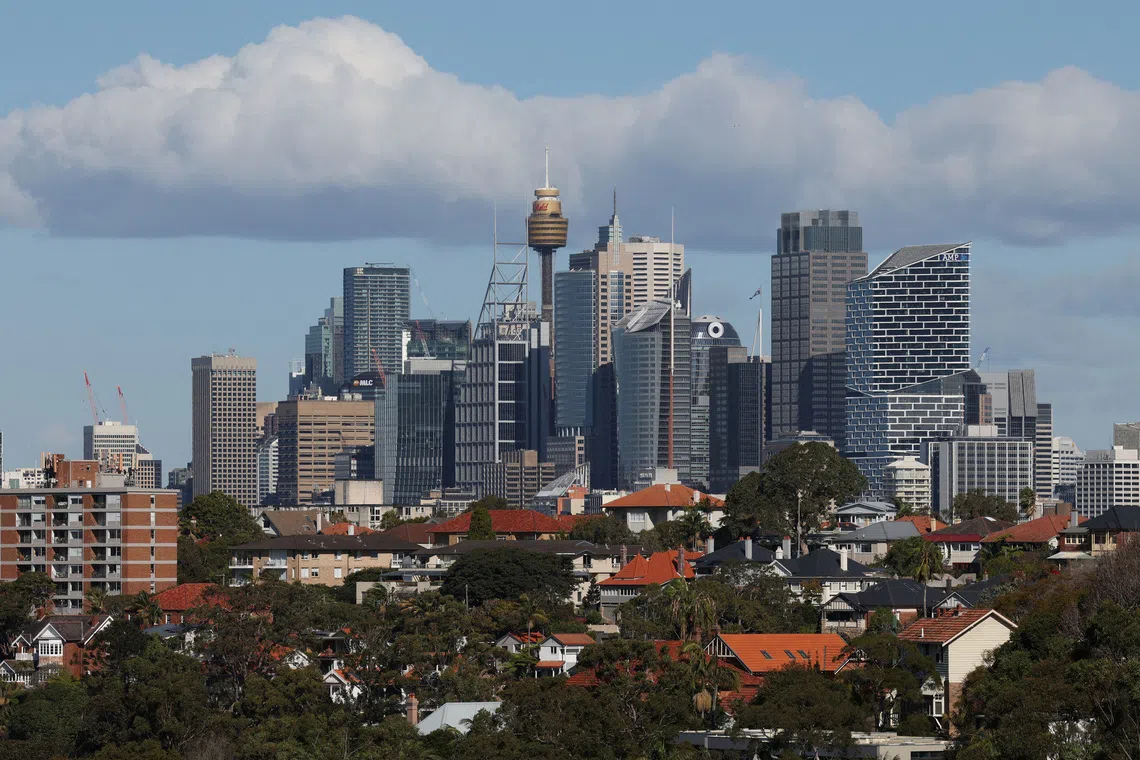Australia monthly inflation picks up in August but core measure cools
Sign up now: Get ST's newsletters delivered to your inbox

Data on Sept 24 from the Australian Bureau of Statistics showed the monthly consumer price index rose 3 per cent in August from a year earlier.
PHOTO: REUTERS
Follow topic:
- Australian CPI rose to 3% in August, the fastest annual pace in a year, driven by base effects, according to the Australian Bureau of Statistics.
- Core inflation eased to 2.6%, influencing investors to adjust predictions toward the Reserve Bank of Australia holding rates steady in September.
- Governor Michele Bullock stated the economy is in "a good place", with inflation expected to return to the 2-3% target range.
AI generated
SYDNEY - Australian consumer prices rose in August at the fastest annual pace in a year, but a key measure of core inflation eased, keeping the door open to a further cut in interest rates.
The Australian dollar inched up 0.2 per cent to US$0.6611 while three-year government bond futures slipped three ticks to 96.51.
Investors maintained bets for the Reserve Bank of Australia (RBA) to keep interest rates steady at 3.6 per cent in September, while paring back the chance of a November easing to 60 per cent, from about 70 per cent before the data.
Data on Sept 24 from the Australian Bureau of Statistics showed the monthly consumer price index (CPI) rose 3 per cent in August from a year earlier and up from 2.8 per cent in July, mostly due to base effects. It came in just above median forecasts of 2.9 per cent.
For the month, CPI was flat as electricity prices fell 6.3 per cent on new government rebates, and holiday travel and accommodation dropped 3.5 per cent.
The key trimmed mean measure of core inflation ran at an annual 2.6 per cent in August, down from 2.7 per cent in July. A measure excluding volatile items and holiday travel climbed to 3.4 per cent from 3.2 per cent.
The RBA has downplayed the importance of the monthly CPI data, saying the series remained too volatile, with interest rates cut in February, May and August 2025 only after assessing the quarterly inflation figures. On Sept 22, Governor Michele Bullock said the economy was in a good place, with inflation expected to return to the midpoint of the target band of 2 per cent to 3 per cent, and the labour market nearing full employment.
The central bank had forecast headline inflation, which ran at 2.1 per cent last quarter, to pick up to 3.1 per cent by the middle of 2026, as electricity rebates fade, but core inflation is expected to stay anchored around 2.6 per cent over the coming years.
All up, that suggested little urgency to cut rates at the central bank’s policy meeting on Sept 29 and Sept 30, since the labour market has stayed resilient, with unemployment at a historically low rate of 4.2 per cent. REUTERS

